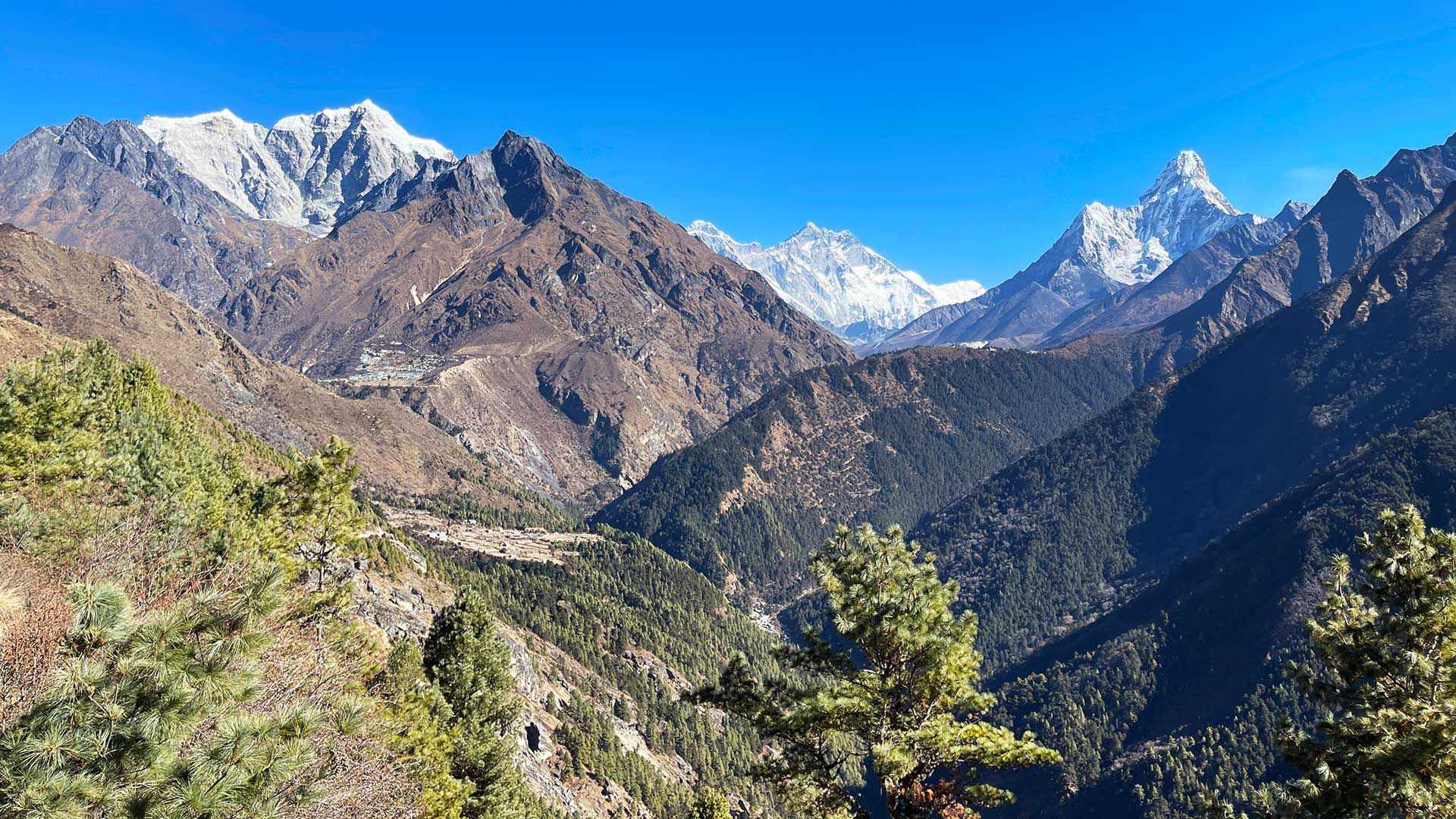


The Everest Trek is one of the most well-known high-altitude hikes in the world. Each year, thousands of trekkers head to the foot of Mount Everest (Sagarmatha) to experience the raw beauty of the Khumbu region, learn about Sherpa culture, and walk among some of the tallest peaks on Earth.
But before you set off, it’s natural to have a lot of questions. How long is the Everest Base Camp trek? When’s the best time to go Everest Base Camp? Do you need permits or a guide for Everest Base Camp? What happens if altitude sickness hits at Everest Base Camp Trek?
This guide answers the 15 most common questions about trekking to Everest Base Camp (EBC), helping you plan with confidence.
Everest Base Camp sits at 5,364 meters (17,598 feet). It’s not the highest point on the trek, but it’s the iconic destination where climbers prepare for Everest summit attempts.
The round-trip distance is about 130 km (81 miles), typically completed in 12 to 14 days starting and ending in Lukla.
Typical cost: $1,300–$2,000 USD including permits, guide, porter, flights, food, and lodging. Luxury treks can cost $3,500+ with helicopter return or premium lodges.
Spring (March–May) and Autumn (September–November) offer the best weather and views. Avoid monsoon (June–August) and prepare for extreme cold if trekking in winter (December–February).
Most trekkers complete the round-trip in 12 to 14 days including acclimatization and side hikes to Kala Patthar or nearby valleys.
Moderate to challenging. No technical skills required, but altitude and long hiking days make it physically demanding. With fitness and acclimatization, most trekkers succeed.
Yes. AMS symptoms include headaches, nausea, and dizziness. Prevent by ascending slowly, staying hydrated, and allowing time to acclimatize. Carry medication like Diamox and descend if symptoms worsen.
Clothing: Layers, waterproof jacket, gloves, warm hat, trekking pants.
Footwear: Broken-in trekking boots, warm socks.
Gear: Sleeping bag (-10°C), backpack, trekking poles, headlamp, water filter.
Extras: Sunscreen, first aid, snacks, permits, power bank, cash.
Yes, as of April 2023, a licensed guide is required for most trekking regions in Nepal, including EBC. Guides improve safety, manage logistics, and provide cultural insight.
Teahouses offer simple rooms (some private, some shared), shared bathrooms, and meals. Hot showers and Wi-Fi are available for an extra fee. Higher up, services are basic but cozy.
Helicopter rescues are available but expensive. Travel insurance that covers high-altitude evacuation is a must. Guides are trained to handle medical emergencies and coordinate evacuations.
Yes, but expect fees and limited access. Charging costs $2–$5 per hour. Wi-Fi is available via Everest Link in towns like Namche, but signal weakens with altitude.
These EBC Trek FAQs cover everything you need to know—from planning and packing to staying safe on the trail. With the right mindset and preparation, trekking to the foot of the world’s tallest mountain is not only possible—it’s unforgettable.